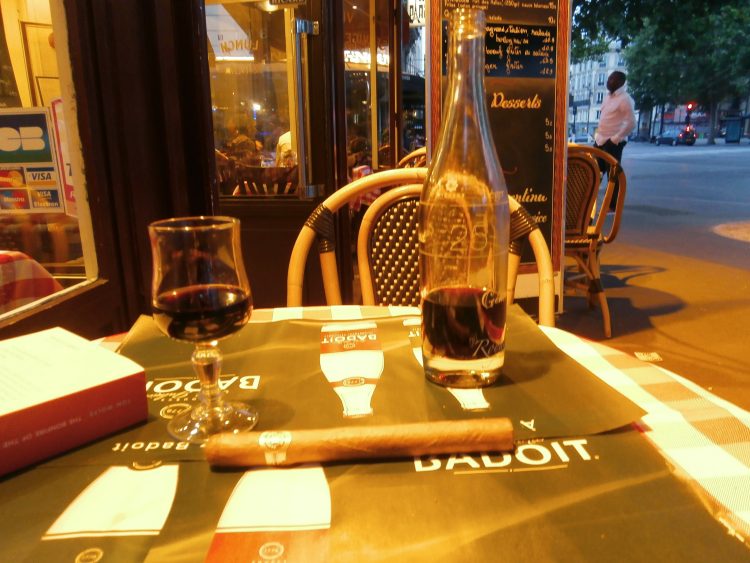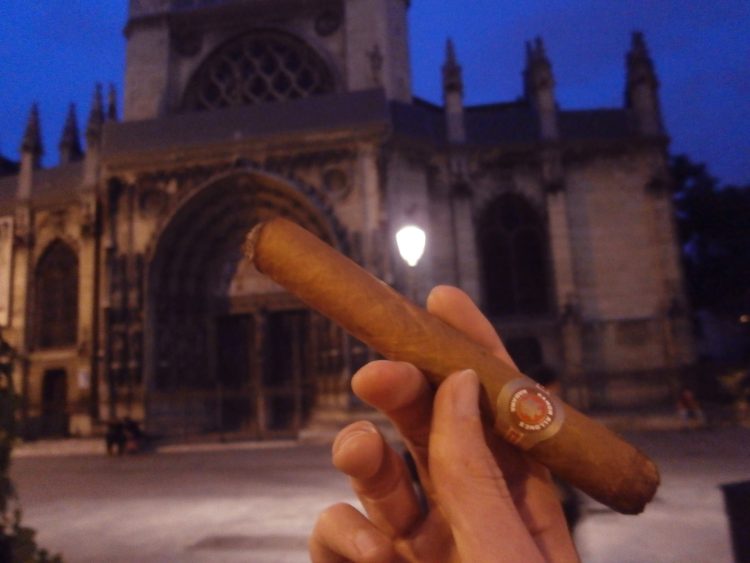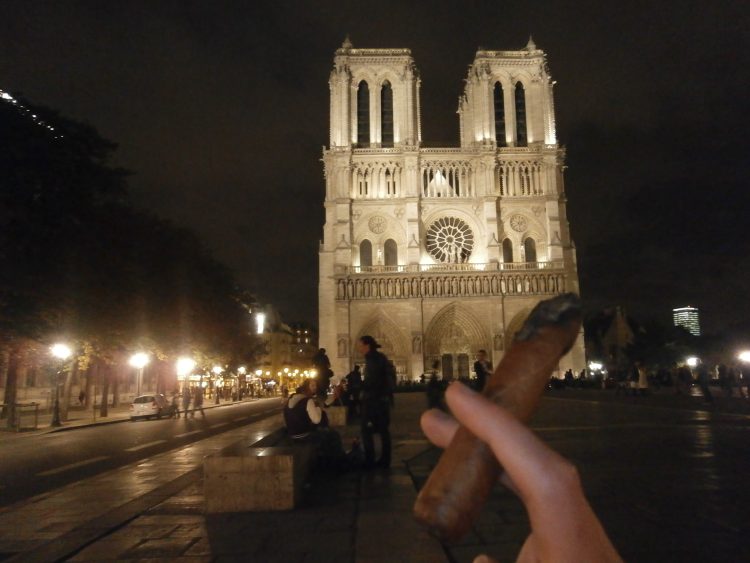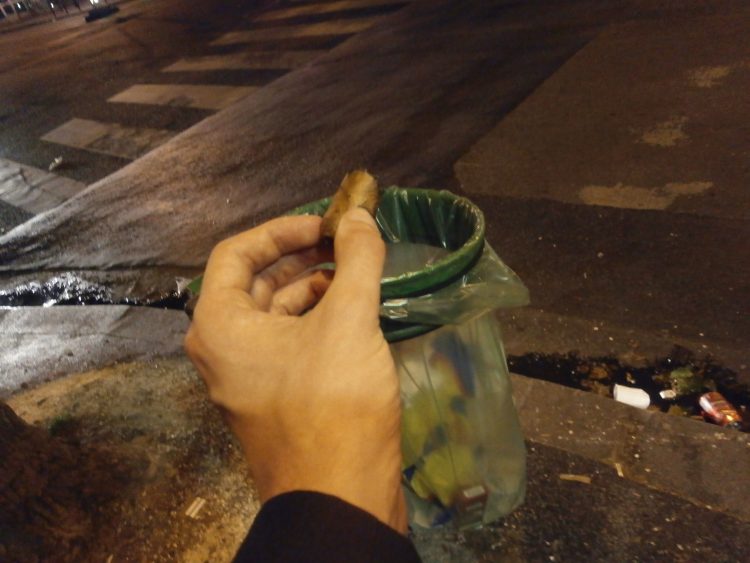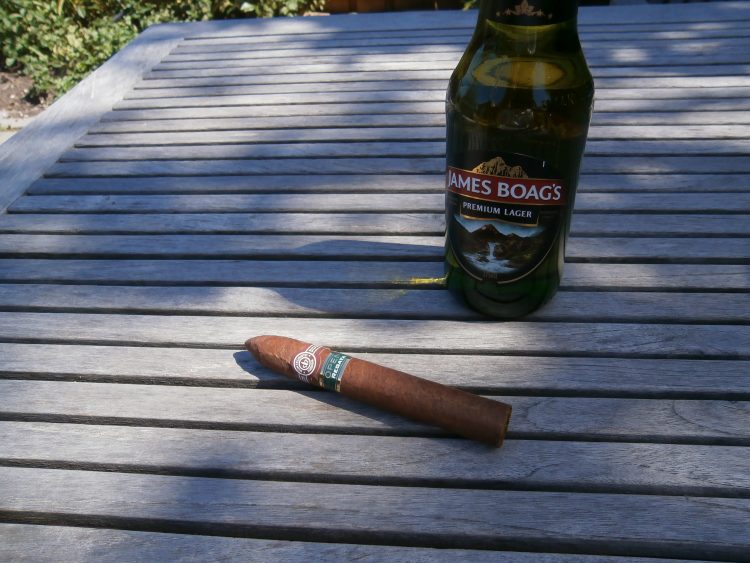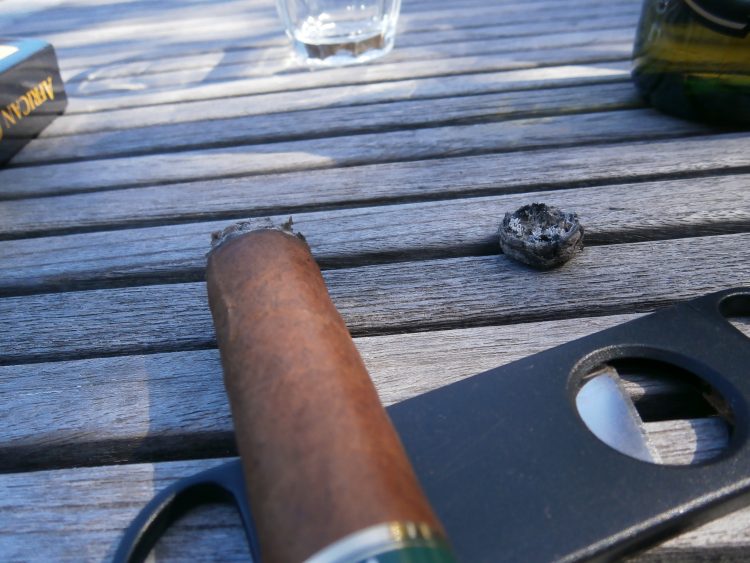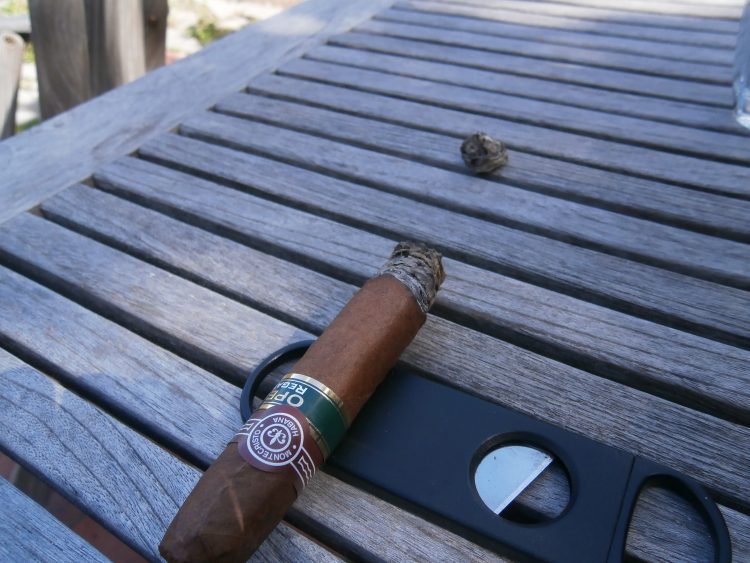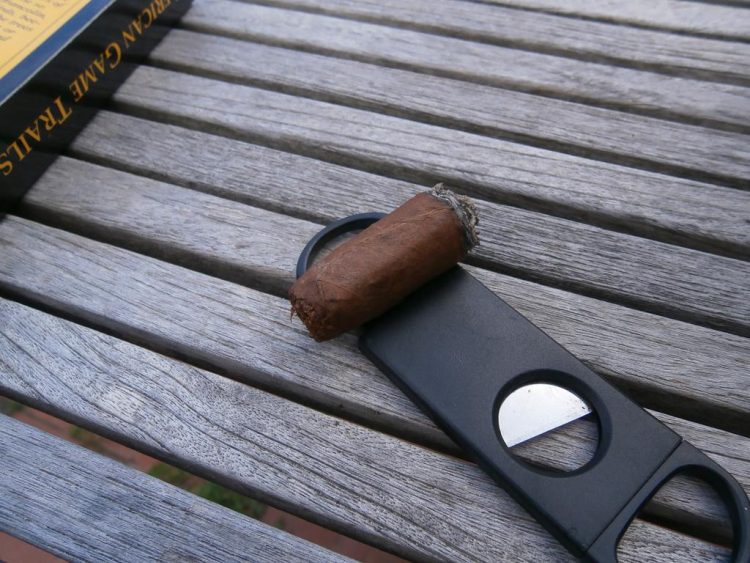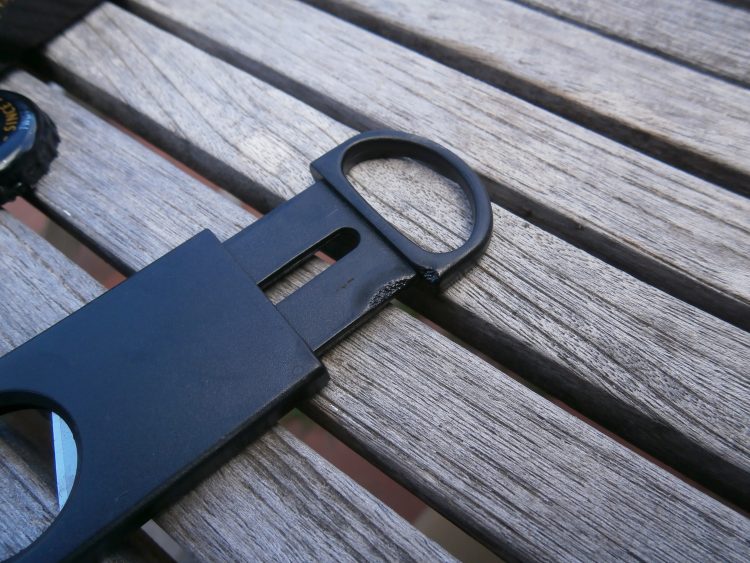Paris. City of lights. City of love. City of an all pervasive and indefinable stink.
I’ve just had a big meal in a small café. A few glasses of wine. An apéritif. A digestif. A cigar feels about right. I have with me a Ramón Allones Gigantes with some age on it. Eight years, maybe ten? I wouldn’t think more than that, it burns too black. It has the old band at any rate, so at least five.
Don’t expect a lot of tasting notes on this one, readers, as honestly, I’m well in the bag already. I can tell from the first puff though that this is bueno tobaco. Very smooth, with a hint of spice. Who are we kidding, cigars taste like tobacco, and so does this one. Beautiful, rich, smooth Cuban leaf.
The sun goes down as I survey the square, puffing occasionally as the French go about their business. In the window of the café an old French woman smiles at me. “Habana?” the waiter asks. “Oui. Si bon.” I order une café. Espresso.
The coffee is a good compliment. Strong notes of it is what I’m getting. It’s hard to say if it’s coming from the cigar or not. Certainly tastes like it. I’m also enjoying the wine, a cheap Bordeaux. I’ve never been a huge fan of red wine with cigars, but on a balmy summer night in Paris what else would one have?
I set off for a walk, down who knows what Parisian boulevard. I’m headed for the river. A black man accosts me. Afro-French? What’s the politically correct term? I’m sure the French would say negro. Emphasis on the neg. He says a lot of words to me in French, but the only two I understand are “cigar” and “hashish.” I assume he either wants one or is trying to sell me the other. I wave him away. I used to have a friend once, years ago, in China, who would occasionally ask me for a cigar so that he could pack it with alternating layers of cocaine and hashish. It was quite a party.
I find myself outside a church I recognise. It’s not a famous one, and not much by Parisian standards, but something in its familiar silhouette cuts through the fog of wine and tobacco and good times, and takes me back, back five years, back to the last time I was in Paris, and back to Audrey.
Audrey was an underwear model and perfect in every way. I had dated her for a year or so two years prior, but ultimately we’d grown apart, our relationship devolving into a continuous, passive aggressive argument. They say that for every impossibly beautiful woman there’s a man who’s sick of putting up with her shit, and for Audrey, I was that man. Or perhaps it was her who was sick of putting up with my shit, I don’t recall. Probably a bit of both. By the time world turned and took me to Paris we’d been broken up long enough that we’d forgotten about the arguments, but not long enough that we’d forgotten about each other. I knew that she was in London – once upon a time we’d planned to take that trip together – and so when I got to Paris I sent her an email. “Meet me under the Arc de Triomphe at noon” I wrote “or, if you don’t want to see me, steer clear, because that’s where I’ll be.” I picked the Arc because it was the only French landmark I knew with an eternal flame. I thought it could be symbolic.
She didn’t steer clear.
I got there fifteen minutes early, and she was there before that, sitting on the grave of the Unknown Soldier in a short red coat. It was cold, just before Christmas, and she had a flush in her cheek and that same old sparkle in her eye. I had a small heart attack when I saw her, and as I touched her shoulder and she turned to me I think she might have had one too, but once my arm slid around her familiar waist, once I’d kissed her velvet cheeks (both of them: we were in Europe), I knew that we were back, back to the best of our relationship. We were back in love.
We held hands, and ran up the stairs of the Eiffel tower. We made love for the first time in her shithole hotel room, just as the sun went down over the Parisian rooftops. She was looking out the window at the sunset and I stood very close behind her, just barely touching her, just barely smelling her hair. Without speaking she walked away from the window, lay down on the bed and looked at me, so I went over and undressed her. I remember she wore matching underwear, sort of a mottled green pattern. She’d planned this. As we reached the sweat drenched climax of our passion the phone starting ringing, the front desk trying to tell us that we’d have to pay an extra 15 euro to have two people in the room.
She was perfect and Paris was perfect. Three days we spent together, walking around, young and in love. This cigar is good, but that was better. She had a mole underneath her right breast. A small waist, and hips that were cantered slightly to one side, but you only noticed from behind.
We didn’t want to go back to the hotel and face another round of angry ringing, so instead we walked the streets at night, finding dark little boltholes in which to devour one another, the thrill of icy fingers sliding beneath warm garments, probing, seeking ever warmer, deeper crevasses in the flesh, giggling and gasping with the chill and excitement; carnal pleasures in alleyways and parks, deserted stairways and banks of the canals.
I find myself at Notre Dame. Where else would I end up? There’s a star on the courtyard here that indicates the starting point of all distances in France or something like that. The cigar is getting bitter now. Tar and nicotine. The best part. It has been burning unevenly for two inches now, but as I sit and contemplate the old cathedral it evens itself up. A good Havana. Castro would be proud. Off to one side some girls are drinking wine, swigging from the bottle. Outside a church in the middle of the night. The most famous church in the world. Paris.
On our last night together she blew me in an elevator. It was three in the morning and we’d been spooked out of half a dozen other places by security guards and midnight ramblers, when we came upon some apartment building with a door that was slightly ajar. We took the elevator up to the sixth floor, but didn’t disembark. I remember the head of my penis was very red and the eyes that looked up at me were very blue. We weren’t quite finished when the elevator began to move. I pressed every button while she did up my fly. We got out on three and walked the rest of the way down, arm in arm and laughing. We passed the middle aged man who had pressed the button in the lobby. He didn’t look impressed. Paris: the city of lights, but the streets are dim in the night-time.
And that was that. I walked her back to her hotel, kissed her goodnight, and a scant few hours later was on the TGV to Zurich, she on the Eurostar back to London. I saw her again a few times over the years, in London once, and Tokyo, but it was never the same as Paris and after a while she emailed to say she’d decided not to see me anymore.
I head back to my hotel. The ash is jet black. This is not an aged cigar at all. Tar and nicotine.
The nub of the cigar finds its final resting place in an anonymous trash-bag on the Boulevard de Strasbourg. Maybe Rue, I can’t remember. You should always nub a cigar, people. You hear cigar aficionados say all the time that they tossed a cigar after two puffs because it wasn’t up to their exacting standards; “life’s too short for bad cigars,” they say. They’re wrong. It’s disrespectful to the farmers. Think of Alejandro Robaina, that one hundred year old sea turtle. It’s the oil from his palms that give cigars their sheen. How could you throw that away?
Ramón Allones Gigantes. A great cigar. Tastes like tobacco.
Audrey, I miss you. My Paris will always stink of you.
